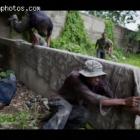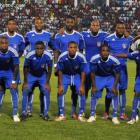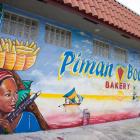ADVERTISEMENT
francois duvalier reign
Paul Eugène Magloire, born in Quartier Morin
Paul Magloire, an army colonel who in 1950 became president of Haiti.
Paul Magloire was born in 1907 in Quartier Morin, the son of a high-ranking military officer in Haiti's army. Magloire was ousted by a coup and replaced by François "Doc" Duvalier.
Rafael Leónidas Trujillo Molina (born on October 24, 1891) was a Dominican politician, soldier and dictator, who ruled the Dominican Republic from February 1930 until his assassination in May 1961. Trujillo was killed by a group of rebels determined to topple his regime. He was Dominican President between 1930-1938 and 1942-1952. In 1937, he ordered the massacre that took more than 35,000 Haitian lives on charges of invading the Dominican Republic. It was launched by the army with common criminals released for these purposes against Haitians living in the Dominican Republic's northwestern frontier and in certain parts of the adjacent Cibao region. It was a shameful and brutal event that harmed his prestige in the entire world. Punishment for the atrocity amounted to an agreement in which a paltry US $525,000 was paid to the Haitian government. Haitian President Élie Lescot put the death toll at 12,168; in 1953, the Haitian historian Jean Price-Mars cited 12,136 deaths and 2,419 injuries. In 1975, Joaquín Balaguer, the Dominican Republic's interim Foreign Minister at the time of the massacre, put the number of dead at 17,000. Other estimates compiled by the Dominican historian Bernardo Vega went as high as 35,000. Before the massacre, Trujillo made his intentions towards the Haitian community clear in a short speech which he delivered on 2 October 1937 at a dance in his honor in Dajabón. He accused Haitians on charges of thefts of cattle, provisions, fruits, etc., and thus they were preventing Dominican people to live a peaceful life.
Trujillo was a man of bad temper, but had many fabricated justifications of such mass genocide. With the crash of world markets and the onset of the Great Depression in 1929, the price of sugar fell drastically, sugar production was cut, and the Haitian worker was no longer in demand in the Dominican Republic. In 1931, Trujillo took power and began to deport Haitians living in the Dominican Republic using discriminatory and inhuman policy to the Haitians. However, when in the 1950s, when the economic situation became reversed, he took a different tone because, by then he had accumulated about 75% of the Dominican sugar mills and had forced many U.S. competitors out of business. To maximize his profit, he turned to the Haitian workers. In 1952, Trujillo and Haiti's President, Paul Magloire, signed a bilateral agreement in which the Dominican Republic bought 16,500 Haitian workers directly from the Haitian government. These migratory Haitian sugar cane cutters were kept in wooden barracks where there was no running water, no electricity, and no bathrooms; the workers were not allowed to leave except to cut sugar cane. Armed guards from the sugar companies kept close watch on them. However, the Haitian government received compensation in selling these men; the money never trickled down into the worker's hands.
Luckner James Cambronne, head of Haiti Tonton Macoutes militiamen
Luckner James Cambronne, born Arcahaie, Haiti 1929, former leader of the dreaded Tonton Macoute militiamen. He was the second most feared man in Haiti during the dictatorship of François "Papa Doc" Duvalier.
Luckner James Cambronne was widely known as "The Vampire of the Caribbean" for his business of transporting Haitian blood and cadavers to US Hospitals, Medical schools and other foreign hospitals for huge profit.
Luckner Cambronne (30 October 1930 - 24 September 2006) was a high profile Haitian politician who rose to the number two position in power during François Duvalier's regime in Haiti. Luckner, the son of a poor preacher had a career as a bank teller, but his alliance with François Duvalier brought him to the powerful political arena where he started out his political career as a messenger for Duvalier, and to finally become second in command and head of his fearsome private militia popularly known as the Tonton Macoutes throughout the 1960's and the beginning of the 1970's. Duvalier created the militia because he felt threatened by the Haitian army. During their reign of terror, the group slaughtered more than 600,000 Haitians.
Luckner's unique brand of cruelty enabled him to become very rich and earned him the nickname "Vampire of the Caribbean." He was named 'Vampire' because of his lucrative practice of selling corpses and blood of Haitians to US and other foreign hospitals at a huge profit. His brutality was incomparable. Luckner never hesitated to kill innocent people for the growth of his business. He used to buy Haitian cadavers from the General Hospital in the capital, Port-au-Prince, for 15 gourdes ($3) a piece to sell them to American medical schools. This made many unfortunate mourners to find their loved one's coffins mysteriously empty. In some cases, it was found that the exported bodies were still alive and they were shipped for high value, resulting in huge profits.
Tonton Macoutes" had a cruel practice of frequent random executions; they often stoned and burned people alive. After the death of François Duvalier in 1971, Cambronne was said to oppose Papa Doc's nomination of his 19-year-old son Jean-Claude Duvalier as successor, but Jean-Claude's mother, Simone Duvalier, outmaneuvered Cambronne and insisted on his exile. Lastly, Cambronne moved to Miami, Florida, in 1972 where he died on 24 September 2006.
Francois Duvalier transfers power to his son Jean Claude Duvalier
Here is a picture of Francois Duvalier as he was transferring power to his son Jean Claude Duvalier.
François Duvalier was the President of Haiti from 1957 until his death (22 October 1957 - 21 April 1971). Unlike other Haitian chief executives, he ruled his country using extreme violence (causing nearly 30,000 deaths) and phony elections to hold down any opposition. To consolidate his power, he reduced the size of the army and, with his chief aide, Clément Barbot, organized a private army "the Tontons Macoutes" (Bogeymen). In 1959, when he was stricken by a heart attack, Barbot acted in his stead. However, upon recovery, Duvalier (Papa Doc, because he was trained as a physician) promptly imprisoned his aide Barbot. He took the title of "President for Life" in 1964 and remained in power until he died in 1971. On Duvalier's death, power was transferred to his son 19-year-old Jean-Claude ("Baby Doc") who succeeded him as president and Jean-Claude Duvalier, became the second-generation "President for Life".
Massacre of April 26, 1986 by Francois Duvalier
Here is a picture on Le Nouveliste about the Massacre of April 26, 1986 by Francois Duvalier.
Massacre of April 26, 1986 by Francois Duvalier is also known by the name of "massacre of Fort-Dimanche" or Fort Death. On that date, the soldiers opened fire on a peaceful procession that started from the Sacre Coeur church for Fort Dimanche in commemoration of the events of April 26, 1963. Twenty years before, on the same day, Tontons Macoutes, carried out a series of assassination of the families who were alleged opponents to Papa Doc Duvalier, after a failed attempt to kidnap his son Jean-Claude (Baby Doc). On April 26, 1963, over a hundred people were killed and several dozens of people were taken to the Fort-Dimanche prison and later they all disappeared, never came back. Twenty years later, when the crowd assembled in front of Fort Dimanche, the army fired upon them. As per collective memory, number of victims was 'fifteen' and according to Human Rights Watch Report, the number was 'eight'.
Haitian Flag Under Francois Duvalier changed in 1964 to black and red
Let me make this clear. neither Francois Duvalier nor his son Jean Claude Duvalier created the new Haitian flag.
In 1964, the Haitian Dictator Francois "Papa Doc" decided to abandon the Red and Blue flag that has been adopted by haitians for over a century and return to the black and red colors. which was flown for the first time by Jean Jacques Dessalines, the founding father of the nation.
From 1964 to 1986 the Black and Red flag was the official flag of the nation. It would not change until the end of the Duvalier reign, when Jean Claude Duvalier went into exile in France. At that point, it was restored to red and blue.
Throughout the history of the Haitian flag, whether the colors are red, blue or black, it has remained a symbol of pride for many Haitians. Some would make you believe that the flag is deeply rooted in the Vodun religion and Jean Jacques Dessalines was in a temple of the religion in Merote, Haiti when he created the flag. Following the death of Dessalines, the country was divided with Henri Christopne in the North, holding on to the Black and Rd, while Petion in the South, red and Blue flag
Francois Duvalier Reign
Here is a pictur of a public poster about Francois Duvalier. He was elected in1956 on a Black nationalist platform which was a populist movement at the time. Francois Duvalier wan over Louis Dejoie, a mulato and Daniel Fignole, a Black proletarian
- He ruled with fear and intimidation. He used his Tonto macoutes or Volontaire de la Securite Nationale to remain in power

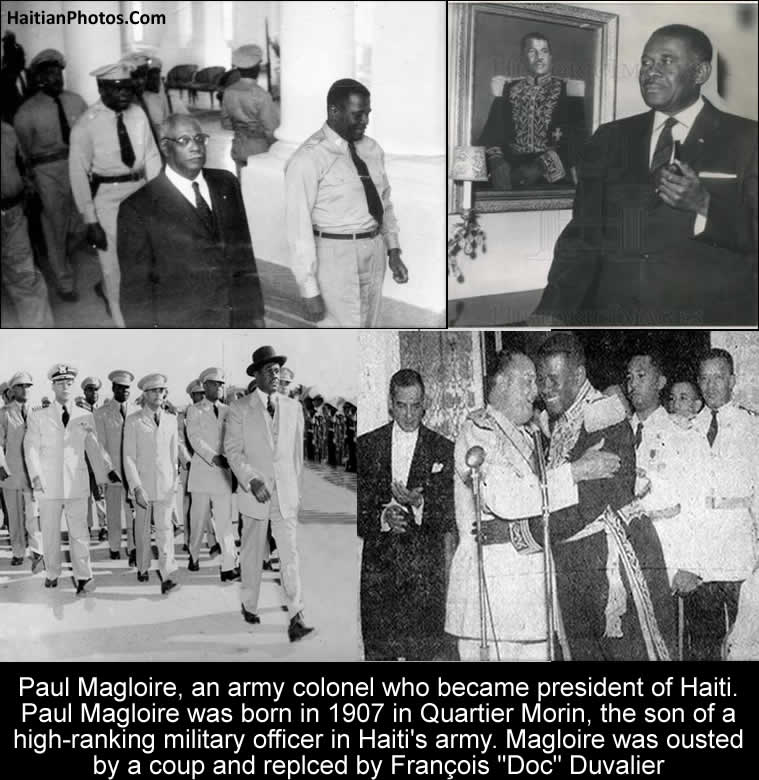
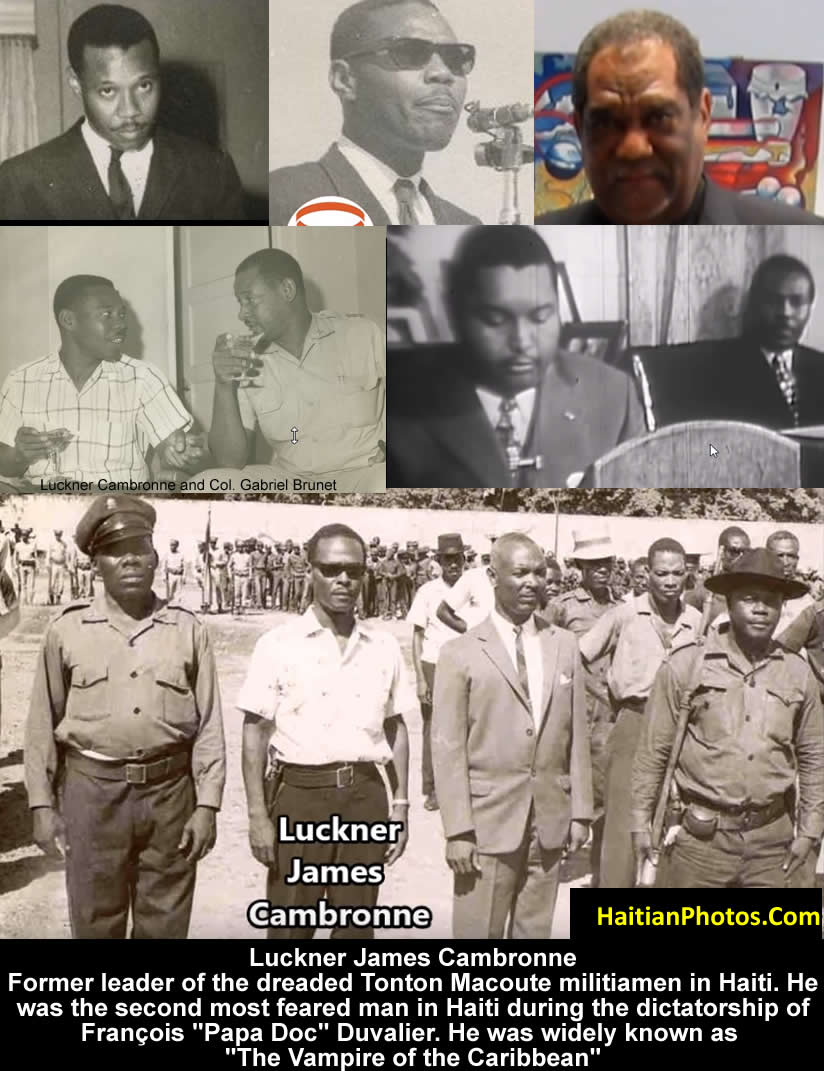
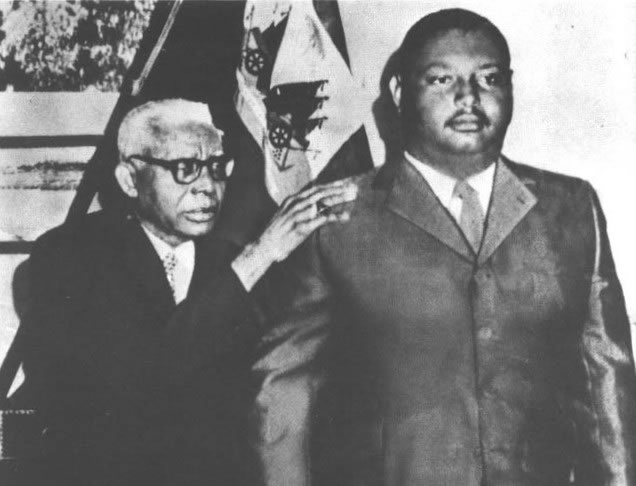
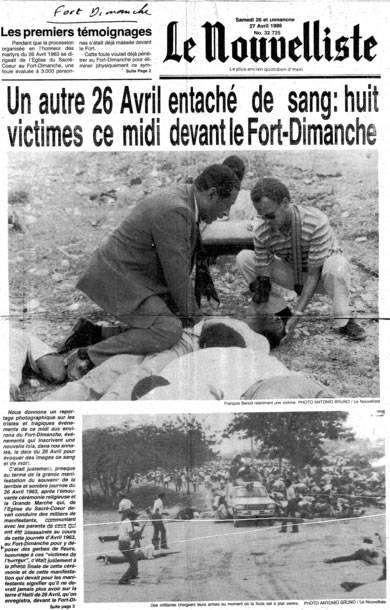
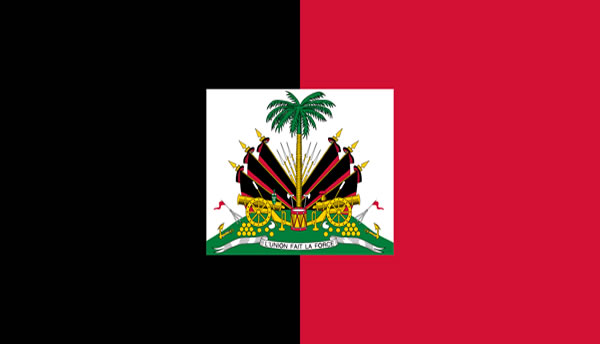
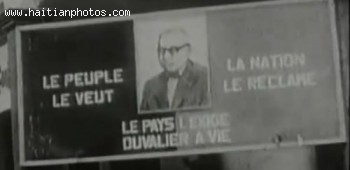
 Who will be the next president of Haiti?
Who will be the next president of Haiti?  Jounalis Phares Duverne mouri
Jounalis Phares Duverne mouri 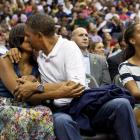 Love between Barack and Michelle Obama
Love between Barack and Michelle Obama 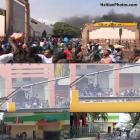 Delimart Plaza, Delmas 32, Port-au-Prince, Haiti being looted
Delimart Plaza, Delmas 32, Port-au-Prince, Haiti being looted 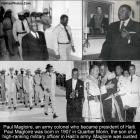 Paul Eugène Magloire, born in Quartier Morin
Paul Eugène Magloire, born in Quartier Morin 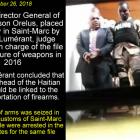 Former PNH Chief, Godson Orelus, arrested for illegal arm...
Former PNH Chief, Godson Orelus, arrested for illegal arm... 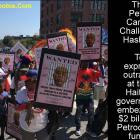 The Petro Caribe Challenge hashtag
The Petro Caribe Challenge hashtag 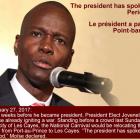 Jovenel Moise, the president has spoken. Period
Jovenel Moise, the president has spoken. Period 